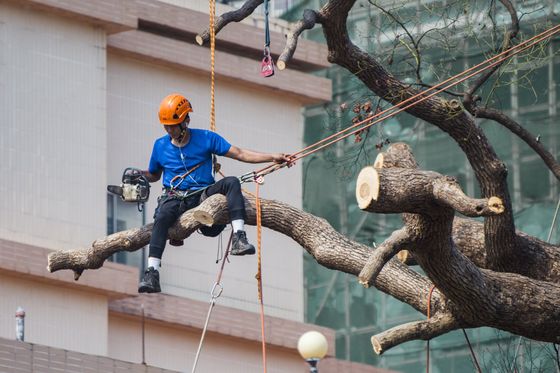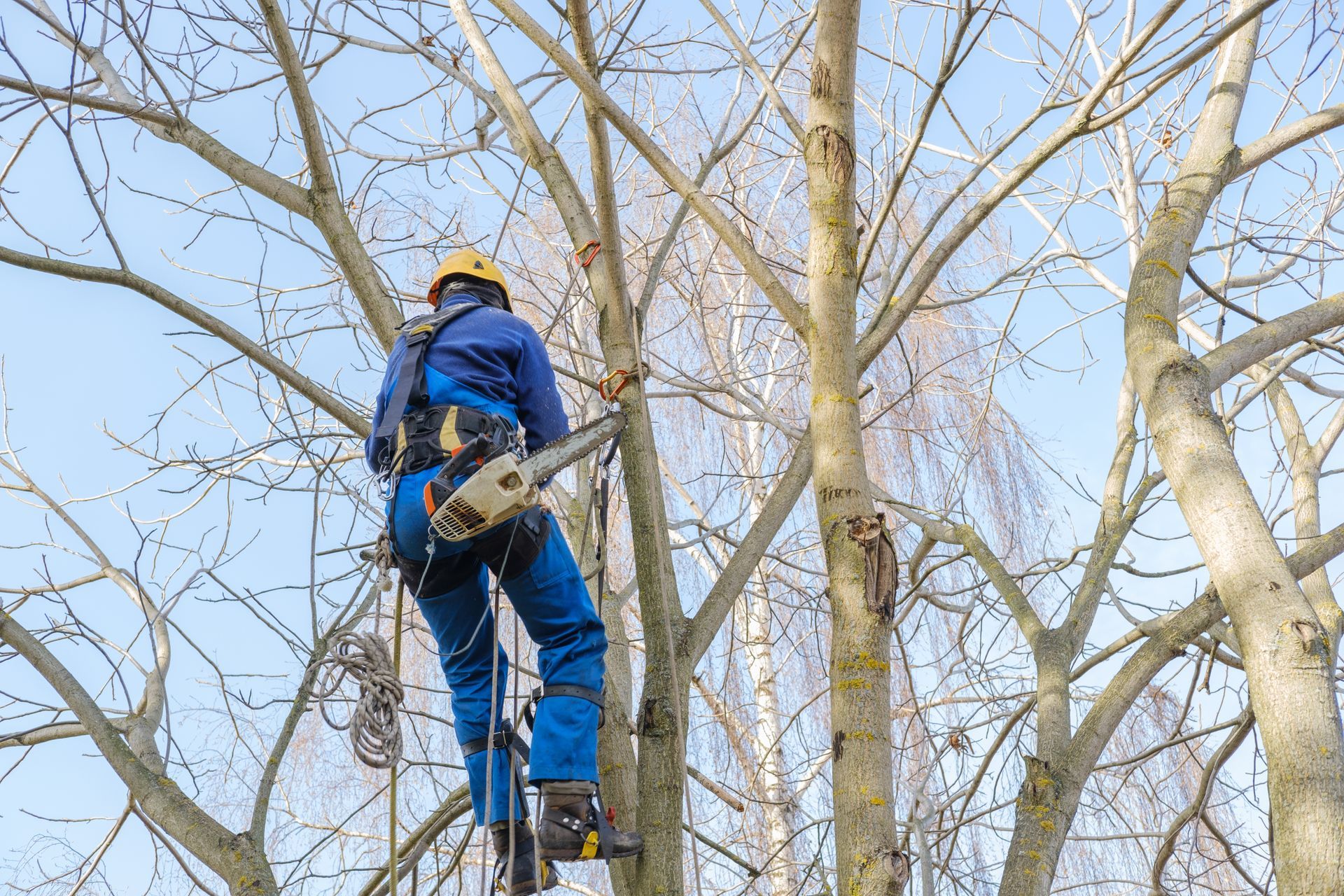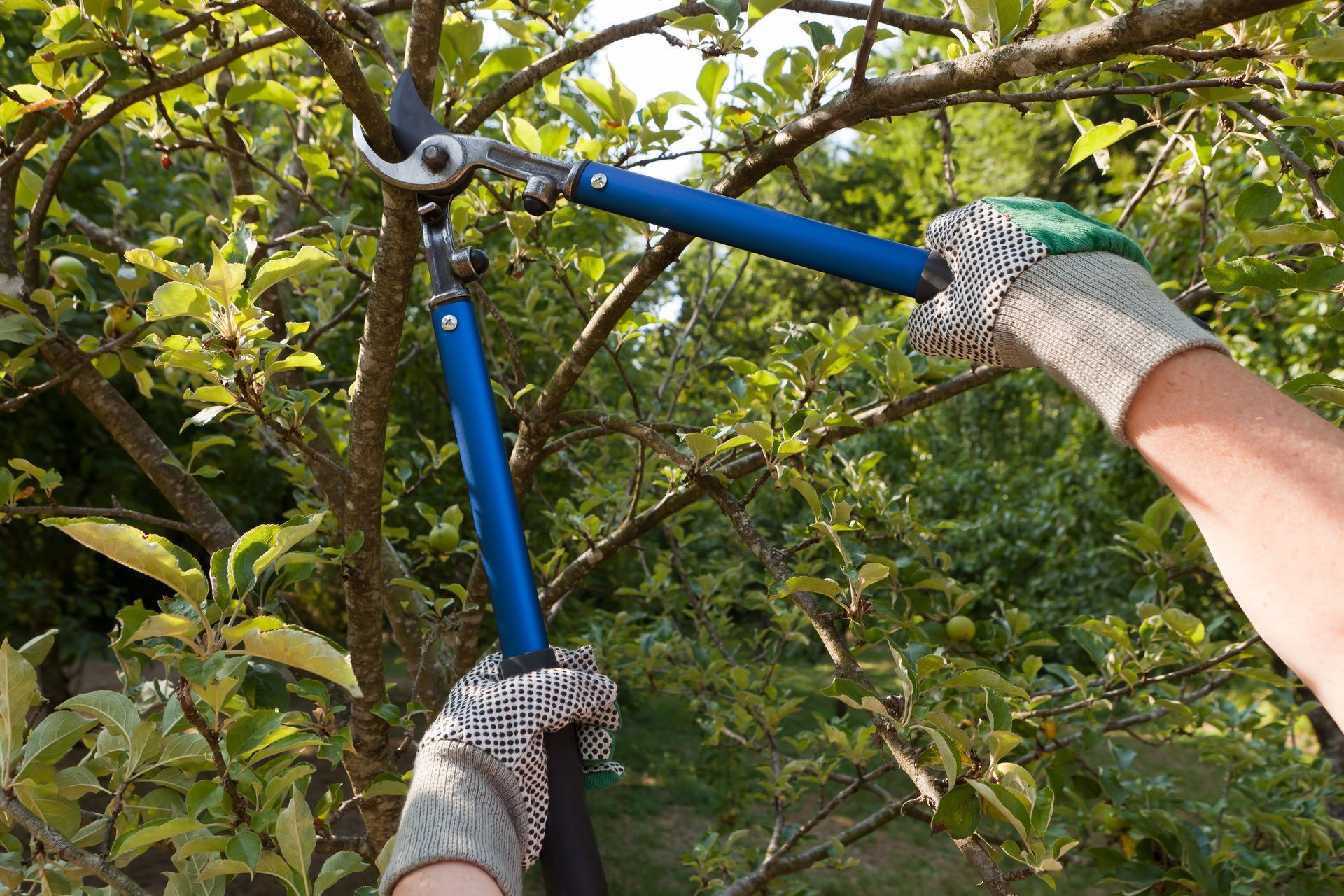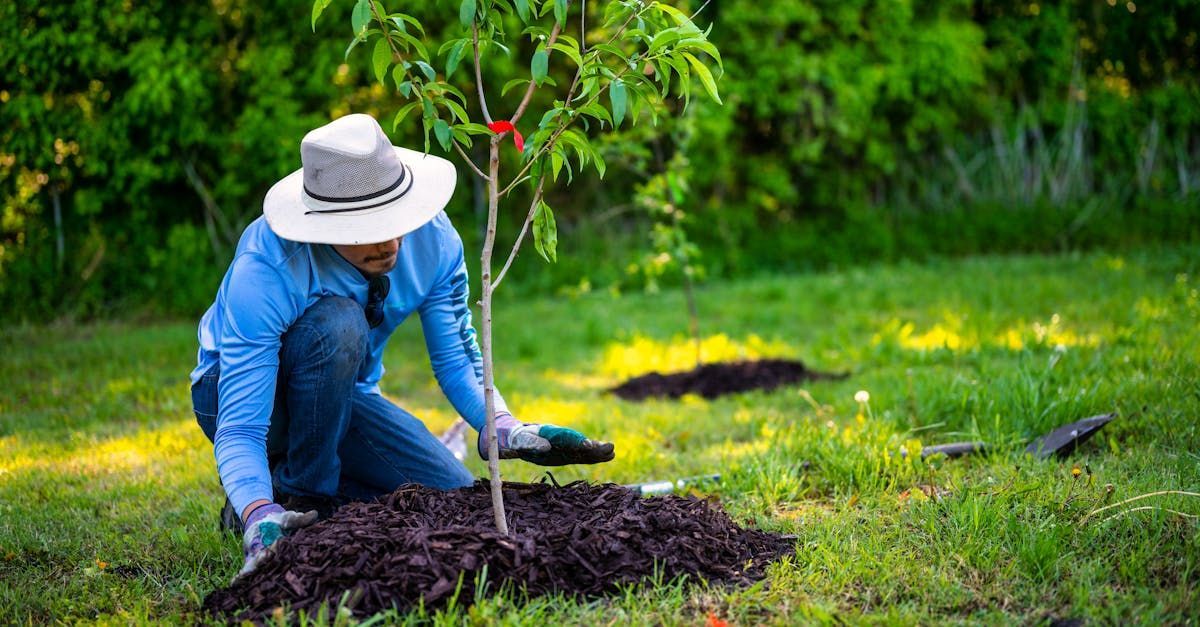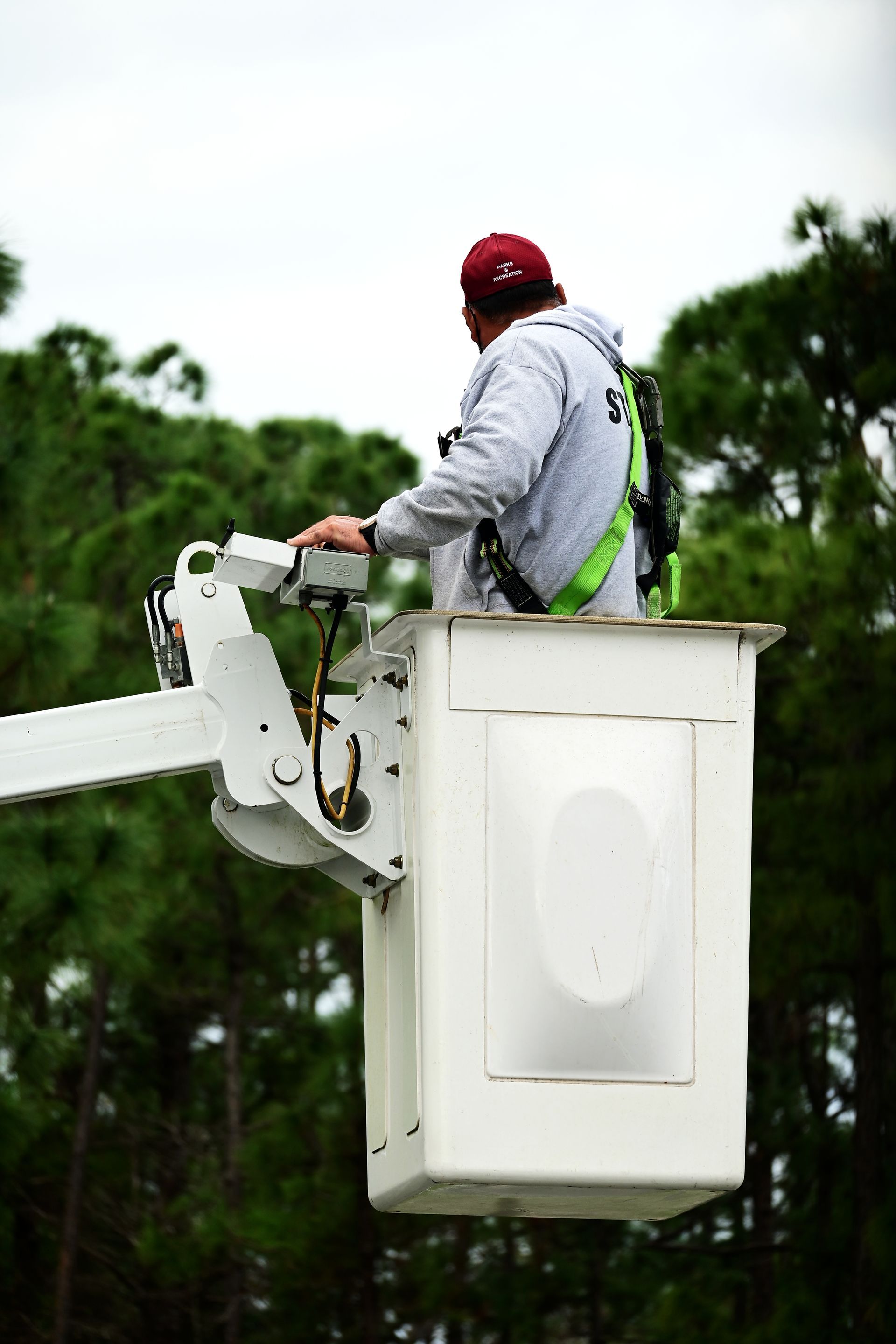By Tyler Walsh
•
June 2, 2024
What Does an Arborist Do? What is an Arborist? An arborist, also known as a tree surgeon, is a specialist in the care of trees. Unlike general landscapers or gardeners, arborists have extensive knowledge about tree biology, growth patterns, and the environmental factors affecting tree health. They are trained to manage the needs of individual trees and understand the impact of their work on the larger ecosystem. Arborists play a critical role in maintaining the health of trees, which in turn supports the broader environmental health, from urban parks to natural forests. Their work helps ensure that trees continue to provide essential benefits such as clean air, shade, and habitat for wildlife. Trees are essential to our environment, providing oxygen, shade, and aesthetic beauty. However, maintaining their health and safety requires expertise. This is where arborists come in. Arborists are professionals trained in the art and science of planting, caring for, and maintaining trees. In this article, we'll explore the various roles and responsibilities of arborists, their qualifications, the tools they use, and their impact on the environment. Understanding the vital role of arborists helps us appreciate the importance of their work in preserving our natural surroundings and ensuring the longevity and health of trees in urban and rural areas alike. Roles and Responsibilities Arborists perform a variety of tasks to ensure trees are healthy and safe, utilizing their specialized knowledge and skills to address a range of tree-related issues. Their responsibilities encompass both routine maintenance and more complex interventions, each aimed at promoting the long-term health and stability of trees. Here are some of the key tasks arborists undertake to care for trees: Tree Care and Maintenance Arborists are responsible for the regular care and maintenance of trees, which includes watering, fertilizing, and mulching to ensure trees receive the nutrients they need to thrive. Regular maintenance helps trees grow stronger and more resilient, making them less susceptible to disease and environmental stress. By maintaining a consistent care routine, arborists can help trees reach their full potential, ensuring they provide environmental benefits such as shade, oxygen production, and habitat for wildlife. Moreover, arborists conduct soil testing to determine nutrient deficiencies and recommend appropriate soil amendments. This scientific approach allows them to tailor their care practices to the specific needs of each tree, promoting optimal growth conditions. Soil health is critical for tree vitality, and understanding its composition helps arborists make informed decisions about fertilization and other treatments. Additionally, arborists monitor trees for signs of pest infestations and diseases, taking preventive measures to protect tree health. Early detection of issues such as fungal infections or insect damage is crucial in preventing widespread problems. Preventive care, including the application of organic treatments and integrated pest management strategies, helps maintain tree health without causing undue harm to the environment. Tree Removal and Pruning Techniques When trees become hazardous or need shaping, arborists use specialized pruning techniques to remove branches or entire trees safely and efficiently. Proper pruning helps to prevent disease and promotes healthy growth. For instance, removing dead or diseased branches prevents the spread of pathogens and reduces the risk of branch failure. This proactive approach ensures the tree's structural integrity and longevity. Arborists are skilled in various pruning techniques, such as crown thinning, crown raising, and crown reduction, each serving different purposes to maintain tree health and structure. Crown thinning improves light penetration and air circulation within the tree, reducing the risk of fungal infections. Crown raising involves removing lower branches to provide clearance for pedestrians, vehicles, or buildings, while crown reduction reduces the size of the tree's canopy, minimizing the risk of storm damage. They also ensure that pruning is done at the right time of year to avoid stressing the tree and to maximize its growth potential. Pruning during the dormant season, typically late winter or early spring, helps minimize sap loss and stress. Seasonal timing is critical, as improper pruning can lead to significant health issues or even tree death Diagnosis and Treatment of Tree Diseases Arborists diagnose and treat various tree diseases and pest infestations. They use their expertise to identify issues early and apply the appropriate treatments to save and protect trees. This might include applying pesticides, fungicides, or other treatments to combat specific pathogens or pests. By understanding the life cycles of pests and diseases, arborists can choose the most effective and environmentally friendly treatments. Arborists also provide recommendations for preventive measures to reduce the risk of future infestations or infections. These measures may include selecting disease-resistant tree species, improving tree spacing for better air circulation, and maintaining proper watering practices. Prevention is always more effective and less costly than treatment, making these recommendations invaluable for long-term tree health. Their knowledge of tree physiology allows them to accurately diagnose problems and implement effective solutions. This expertise includes understanding how diseases spread, how trees react to stress, and the best ways to support tree recovery. For example, treating root rot requires different techniques than addressing leaf spot diseases, and arborists tailor their approach to the specific condition. Emergency Tree Services After storms or other natural disasters, arborists provide emergency services to remove fallen trees and branches , ensuring safety and preventing further damage to property. These services are critical in mitigating hazards and restoring normalcy after severe weather events. Quick response times and efficient removal techniques help minimize the impact of such disasters on communities and properties. Arborists are trained to handle emergency situations with precision and care, ensuring that the removal process is conducted safely and efficiently. They use specialized equipment and techniques to safely dismantle and remove large or precariously positioned trees, reducing the risk of injury or property damage. Safety is paramount during these operations, and arborists are skilled in assessing and mitigating potential risks. Their expertise in assessing tree stability and potential risks is invaluable in such situations. They can determine whether a tree poses an immediate hazard or if it can be saved with appropriate care. This assessment helps property owners make informed decisions abo ut tree removal or r etention, balancing safety concerns with the desire to preserve valuable trees. Qualifications and Training Becoming an arborist requires specialized education and training, encompassing a range of topics and practical skills essential for the proper care and management of trees. This extensive preparation ensures that arborists are well-equipped to handle the complex and varied tasks involved in their profession. Let's explore the key components of the education and training process for aspiring arborists. Certification Requirements Arborists typically obtain certification from organizations such as the International Society of Arboriculture (ISA) or the Tree Care Industry Association (TCIA). Certification involves passing exams and demonstrating a thorough understanding of tree care practices. These certifications are a mark of professional competence and commitment to the highest standards in tree care. Certified arborists must adhere to a code of ethics and continue their education to maintain their certification. Certification also provides assurance to clients that the arborist has met rigorous industry standards and is committed to ongoing professional development. The certification process includes practical and theoretical examinations, covering topics such as tree biology, soil science, pest management, and safety practices. This comprehensive assessment ensures that certified arborists have the knowledge and skills necessary to provide high-quality tree care. Specialized Training in Tree Care Arborists undergo extensive training in areas such as tree biology, pest management, and advanced pruning techniques. This training ensures they can provide expert care for all types of trees. Arborists learn how to properly plant, water, and fertilize trees, as well as how to diagnose and treat various tree diseases. Their training also covers safety protocols and the use of specialized equipment to ensure they can perform their duties safely and effectively. This specialized training is often conducted through a combination of classroom instruction, fieldwork, and apprenticeships. Hands-on experience is crucial, as it allows arborists to apply their theoretical knowledge in real-world scenarios. Learning to operate chainsaws, climbing equipment, and other tools safely is an essential part of their education, preparing them for the physical demands of the job. Importance of Ongoing Education and Professional Development To stay current with the latest techniques and safety standards, arborists participate in ongoing education and professional development. This commitment to learning helps them maintain their certification and deliver the best care possible. Arborists attend workshops, conferences, and courses to keep up with advancements in tree care and emerging threats to tree health. This continuous learning process ensures they are always equipped with the most up-to-date knowledge and skills to care for trees effectively. Ongoing education also includes staying informed about new research, technologies, and best practices in arboriculture. This dedication to lifelong learning reflects the dynamic nature of the field, where new challenges and innovations continually arise. By staying current, arborists can provide the highest level of care, ensuring that trees receive the best possible treatment and management. Tools and Equipment Arborists use a variety of tools to perform their work safely and effectively, each designed to address specific tasks involved in tree care and maintenance. The use of the right tools not only enhances the efficiency of their work but also ensures the safety of both the arborist and the tree. Here's a detailed look at some of the essential tools and equipment arborists rely on Overview of Tools Used by Arborists Common tools include chainsaws, hand saws, pruning shears , and climbing equipment. Each tool is designed to perform specific tasks, from cutting branches to safely ascending tall trees. Arborists also use equipment like wood chippers to dispose of branches and tree debris efficiently. For more delicate tasks, they might use loppers and pole pruners to reach higher branches without climbing. Chainsaws are indispensable for cutting large branches and trunks, while hand saws and pruning shears are used for more precise cuts. Climbing equipment, including ropes, harnesses, and spikes, enables arborists to reach and maneuver within the canopy safely. Each tool is selected based on the specific requirements of the task, ensuring that the work is done efficiently and safely. Importance of Using Proper Equipment for Safety and Efficiency Using the right equipment is crucial for an arborist's safety and the efficiency of their work. Proper equipment helps prevent accidents and ensures that tasks are completed effectively. Arborists also use protective gear such as helmets, gloves, and harnesses to protect themselves while working. Regular maintenance and inspection of tools and equipment are essential to ensure they are in good working condition and safe to use. The right tools not only make the job easier but also help arborists perform their tasks with precision and care, ensuring the health and safety of the trees they work on. Regular maintenance of equipment, such as sharpening saw blades and checking climbing gear for wear, is essential to prevent accidents and ensure efficiency. Arborists also receive training in the safe use of their tools, including proper handling techniques and safety protocols. This training reduces the risk of injury and ensures that tree care operations are conducted smoothly and effectively. Environmental Impact Arborists play a vital role in environmental conservation, contributing significantly to the health and sustainability of our ecosystems. Their work not only focuses on individual tree care but also extends to broader environmental stewardship and community well-being. Here are several ways in which arborists contribute to environmental conservation. Role of Arborists in Environmental Conservation Arborists help maintain healthy urban forests and landscapes, which are essential for biodiversity and ecological balance. Their work supports the overall health of the environment. By ensuring that trees are healthy and well-maintained, arborists contribute to cleaner air, improved water quality, and reduced soil erosion. They also advocate for the preservation of mature trees, which are valuable for their ecological benefits. Urban forests play a critical role in mitigating the urban heat island effect, reducing energy consumption, and improving the quality of life for city dwellers. Arborists' efforts in maintaining these green spaces enhance the resilience of urban areas to climate change and other environmental challenges. Their work in tree planting and maintenance supports biodiversity, providing habitats for various species of birds, insects, and other wildlife. Benefits of Proper Tree Care for Ecosystems Proper tree care promotes healthy ecosystems by improving air quality, providing habitats for wildlife, and reducing soil erosion. Arborists' expertise ensures that trees continue to provide these benefits for generations. Healthy trees play a crucial role in sequestering carbon, which helps mitigate the effects of climate change. Arborists' efforts to maintain and protect trees contribute to a healthier and more sustainable environment for all living beings. Trees are vital components of the ecosystem, and their health directly impacts the broader environment. Well-maintained trees support soil health, prevent runoff, and enhance water quality by filtering pollutants. Arborists' work ensures that trees can fulfill these ecological functions, contributing to the overall health and stability of ecosystems. Benefits of Hiring an Arborist There are many advantages to hiring a professional arborist, especially when it comes to the health, safety, and aesthetics of your trees and landscape. Arborists bring a wealth of knowledge, specialized skills, and professional experience to tree care, ensuring that trees are properly maintained and cared for. Here are some key advantages to hiring a professional arborist: Importance of Hiring a Professional Arborist Professional arborists have the knowledge and experience to care for trees properly. Their expertise ensures that trees are maintained safely and healthily. Arborists can identify potential issues before they become major problems, saving property owners time and money in the long run. Their professional training and certification provide peace of mind that the job will be done correctly and safely. Hiring a certified arborist means that you are entrusting your trees to someone who understands their biological and structural needs. Arborists can provide tailored care plans that address the specific requirements of different tree species, ensuring optimal health and growth. Their ability to diagnose and treat tree diseases early prevents costly and extensive damage, preserving the value and beauty of your landscape. Advantages of Professional Tree Care Services Professional tree care services can prevent costly damage to property and improve the aesthetic appeal of a landscape. Arborists' skills and equipment make them uniquely qualified to handle complex tree care tasks. Regular maintenance by a professional arborist can extend the life of trees, enhance property values, and create a safer environment by reducing the risk of falling branches or trees. Arborists provide comprehensive care that includes pruning , fertilization, pest management, and disease control. Their services ensure that trees remain healthy and vibrant, contributing to the overall beauty and functionality of the property. Additionally, professional tree care enhances safety by removing hazardous branches and assessing tree stability, reducing the risk of accidents and property damage. Long-Term Benefits for Property Owners Investing in professional tree care can increase property values, enhance curb appeal, and ensure the long-term health of trees. Healthy, well-maintained trees can provide significant benefits for many years. Arborists' work helps ensure that trees remain assets to a property rather than liabilities, offering aesthetic, environmental, and economic advantages. Well-maintained trees add to the aesthetic value of a property, making it more attractive to potential buyers and increasing its market value. Trees that are cared for by professionals are less likely to develop problems that could lead to costly repairs or removals. In the long term, the investment in professional tree care pays off through increased property value, enhanced enjoyment of outdoor spaces, and reduced maintenance costs. Common Tree Problems and Solutions Arborists are skilled at identifying and solving common tree issues, leveraging their expertise to quickly recognize symptoms of diseases, pest infestations, and structural problems, and applying targeted treatments to address these issues effectively. Identification of Common Tree Issues Arborists can spot signs of disease, pest infestations, and structural problems early, allowing for prompt and effective treatment. They are trained to recognize symptoms such as discolored leaves, unusual growth patterns, and the presence of pests or fungi. Early identification and intervention can prevent the spread of disease and save trees from decline. Recognizing the early signs of tree problems is crucial for effective management. Arborists use their knowledge of tree biology and pathology to diagnose issues accurately, ensuring that appropriate treatments are applied. This proactive approach helps maintain tree health and prevents minor issues from escalating into major problems. Recommended Solutions and Preventive Measures Arborists recommend solutions such as pruning, treatment with pesticides or fungicides, and proper watering techniques. Preventive measures can help trees avoid common problems and thrive. Arborists also advise on best practices for tree care, such as proper planting depth, mulching techniques, and the importance of regular inspections. Implementing preventive measures is a key aspect of arborists' work. By advising on correct planting techniques, appropriate watering schedules, and regular maintenance practices, arborists help property owners create conditions that support tree health and resilience. These measures reduce the likelihood of pest infestations, diseases, and structural issues. Importance of Regular Tree Inspections Regular inspections by an arborist can identify potential issues before they become serious problems. Routine check-ups ensure that trees remain healthy and safe. Inspections allow arborists to monitor the health of trees over time, making adjustments to care practices as needed to address changes in the tree's condition or environment. Routine inspections are vital for early detection and treatment of tree problems. Arborists assess the overall health of trees, check for signs of stress or damage, and recommend appropriate interventions. Regular monitoring helps ensure that trees receive timely care, preventing long-term damage and maintaining their health and beauty. Arborist Code of Ethics Arborists adhere to a strict code of ethics, which emphasizes principles such as safety, professionalism, integrity, and environmental stewardship. This code ensures that arborists conduct their work responsibly, prioritize the well-being of both trees and the community, and maintain high standards of practice in all their tasks. Overview of the Code of Ethics Followed by Arborists The code of ethics emphasizes safety, professionalism, and environmental stewardship. Arborists commit to maintaining high standards in their work. This code ensures that arborists act in the best interest of their clients, the public, and the environment. It includes principles such as honesty, integrity, and respect for nature. Adhering to a code of ethics is fundamental to the arboriculture profession. Arborists are dedicated to providing accurate information, using safe and sustainable practices, and treating clients and colleagues with respect. This ethical framework guides their decision-making and interactions, fostering trust and confidence in their services. Importance of Ethical Conduct in the Profession Ethical conduct ensures that arborists provide honest, reliable services and maintain the trust of their clients. It also supports the reputation of the profession. Clients can trust that certified arborists will provide accurate information, use safe practices, and prioritize the health and safety of trees and people. Maintaining ethical standards is crucial for building and sustaining client relationships. Arborists who adhere to ethical principles demonstrate their commitment to quality and integrity, enhancing their professional reputation. This trustworthiness is essential for long-term success and positive client experiences. Commitment to Safety, Professionalism, and Environmental Stewardship Arborists prioritize safety in all their tasks, uphold professional standards, and work to protect the environment. Their commitment to these principles guides their daily work. Arborists are trained to assess risks, use protective gear, and follow safety protocols to prevent accidents. They also advocate for sustainable practices that benefit the environment, such as planting native species and reducing chemical use. Safety is a top priority in arboriculture, and arborists are trained to follow stringent safety protocols to protect themselves, their clients, and the public. Professionalism involves not only technical competence but also ethical behavior and client communication. Environmental stewardship reflects arborists' dedication to preserving natural resources and promoting sustainability. Arborists play a crucial role in maintaining the health and safety of our trees, benefiting both our environment and our communities. Their expertise ensures that trees receive the care they need to thrive, providing us with countless environmental and aesthetic benefits. By hiring a professional arborist, property owners can ensure the long-term health and beauty of their trees, contributing to a healthier, more sustainable world. Arborists' work not only enhances the beauty and safety of individual properties but also supports the broader goals of environmental conservation and urban forestry. FAQs 1) What is the difference between an arborist and a tree trimmer? While both arborists and tree trimmers work with trees, arborists have specialized knowledge and training in tree biology, care, and management, making them more qualified to handle complex tree issues. Arborists are certified professionals who follow a code of ethics and are trained to diagnose and treat tree diseases, assess tree health, and implement advanced pruning techniques. In contrast, tree trimmers may focus primarily on removing branches for aesthetic or practical reasons without the same depth of expertise in tree health. 2) How often should I have my trees inspected? It's recommended to have your trees inspected by a certified arborist at least once a year to identify and address any potential issues early. Regular inspections help catch problems like disease, pest infestations, and structural weaknesses before they become severe, ensuring the long-term health and safety of your trees. During an inspection, an arborist will assess the overall condition of your trees, recommend necessary care, and provide guidance on maintaining their health. 3) What are some signs that my tree is diseased? Common signs of tree disease include discolored or wilted leaves, unusual growth patterns, dead branches, and the presence of fungi or pests. If you notice any of these signs, contact an arborist for a diagnosis. Early detection and treatment are crucial in managing tree diseases effectively. Arborists can identify the specific disease affecting your tree and recommend appropriate treatments to restore its health. Regular monitoring and preventive care can also help reduce the risk of disease. 4) Can arborists help with tree planting? Yes, arborists can provide guidance on selecting the right tree species for your location, proper planting techniques, and ongoing care to ensure the tree's healthy growth. They consider factors such as soil type, climate, and available space to recommend the best trees for your property. Arborists can also assist with the actual planting process, ensuring that trees are planted at the correct depth and spacing to promote healthy root development and growth. Their expertise helps ensure that new trees establish successfully and thrive in their environment. 5) What should I look for when hiring an arborist? When hiring an arborist, look for certification from a recognized organization, such as the ISA or TCIA, as well as positive reviews and references from previous clients. It's also important to ensure they have proper insurance and follow safety protocols. Certified arborists adhere to a professional code of ethics and are committed to ongoing education, ensuring they provide the highest quality care. Additionally, ask about their experience with specific tree species and services you need to ensure they are well-equipped to handle your tree care requirements. A reputable arborist will provide detailed estimates, answer your questions, and demonstrate a commitment to the health and safety of your trees.

